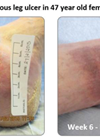The Battle of Culloden, fought on 16 April 1746, marked the end of the Jacobite uprising in Scotland. It was a devastating clash between the Jacobite forces led by Charles Edward Stuart (‘Bonnie Prince Charlie’) and the British army under the command of the Duke of Cumberland.
The Jacobites were fighting to restore the exiled James VIII as the King. Charles was his son. Meanwhile, the establishment King was George II. He was a Hanoverian (a German) and the Duke of Cumberland was his son.
Cumberland's 25th birthday was 15 April and his army were rewarded with a feast and drinks in celebration. Meanwhile, the straggling Highland forces were restricted to rations of three biscuits per day. The battle was a strategic and tactical disaster and in less than an hour it was over. Around 1300 soldiers were slain – 1250 of the dead were Jacobites. The bloody aftermath saw the massacre of wounded Highlanders and the suppression of Highland culture, including traditional healing practices.
In the desolate terrain, the healers of the Highlands, often women, turned to the plants of the surrounding moorlands, hills and lochs to tend to the injured and dying. This article explores the flora that might have been available to these healers near the Culloden Field and their therapeutic properties.
1. Heather (Calluna vulgaris)
Heather, a hardy and resilient plant, blankets the moorlands surrounding Culloden with its purplish-pink flowers. Historically, it was valued not only for its beauty but also for its medicinal properties.

Heather flowers were used to make infusions and teas that helped with urinary tract infections and kidney ailments due to their diuretic properties. The plant also has antiseptic qualities, making it useful for washing wounds.
In Highland tradition, heather is considered a symbol of good luck and protection. After the battle, its use by healers was likely practical and symbolic, embodying the resilience of the Highland spirit [1].
2. Bog myrtle (Myrica gale)
Bog myrtle, also known as ‘sweet gale’, grows in the damp moorlands and bogs of the Scottish Highlands. Its aromatic leaves have a strong, spicy scent.

Bog myrtle has been used traditionally as an anti-inflammatory and astringent. The leaves were often crushed to create poultices for treating wounds and preventing infections. Its insect-repellent properties were also valued, especially in the summer months when midges and mosquitoes were prevalent.
Bog myrtle’s role as a medicinal plant highlights the deep connection between Highland healers and their environment, as they relied on its strong antiseptic qualities to tend to wounds and skin infections after the battle [2].
3. Scots pine (Pinus sylvestris)
The Scots pine is the national tree of Scotland and a familiar sight in the Highlands. Its needles, resin and bark were all used in traditional medicine.

The resin of Scots pine was used as a disinfectant and for making salves to treat cuts and burns. Pine needle infusions were believed to boost immunity and were used to treat respiratory ailments, such as coughs and colds.
In the aftermath of battle, the antiseptic and wound-healing properties of Scots pine would have been essential for preventing infections in injured soldiers [3].
4. Juniper (Juniperus communis)
Juniper shrubs are found scattered across the Highland landscape. The berries, needles, and wood were all utilised by the Highland healers.

Juniper berries were chewed to aid digestion and alleviate stomach pain. They were also used as a diuretic and were believed to help with kidney and bladder issues. Inhaling the smoke from burning juniper was thought to purify the air and ward off infection.
Juniper was considered a sacred plant, used in rituals for protection and purification. This practice may have been especially comforting in the aftermath of Culloden, where the stench of blood and death filled the air [4].
5. Meadowsweet (Filipendula ulmaria)
Meadowsweet grows abundantly in damp meadows and along the edges of watercourses. It was one of the most valued plants in traditional Highland medicine.

Meadowsweet contains salicylic acid, the natural precursor to aspirin. It was used to alleviate pain, reduce fever, and treat inflammatory conditions. An infusion of the flowers and leaves was often given to those suffering from headaches or body aches, providing some relief from the pain of battle wounds.
Given its potent pain-relieving properties, meadowsweet was a likely choice for Highland healers dealing with the aftermath of the battle [5].
6. Yarrow (Achillea millefolium)
Yarrow, also known as ‘soldier’s woundwort’, grows widely across the Scottish Highlands. Its feathery leaves and small, white flower clusters make it a familiar sight in the region.

Yarrow was commonly used for its astringent and styptic properties (styptic properties are the ability of a substance to contract tissue and seal blood vessels to stop bleeding). It was applied to wounds to stop bleeding and prevent infections. Infusions made from yarrow leaves were also used to aid digestion and alleviate cold symptoms.
Given its reputation as a wound healer, yarrow would have been invaluable for treating the injured, stemming blood flow and reducing inflammation [6].
7. Wild thyme (Thymus serpyllum)
Wild thyme carpets the rocky, sunlit slopes of the Highlands. It was well regarded for its aromatic and medicinal qualities.

Wild thyme was used as an antiseptic and expectorant. Healers made infusions to treat respiratory infections, coughs and sore throats. It was also used in poultices for its antiseptic properties, helping to clean wounds and promote healing.
The fragrant herb was also used in rituals of purification and as a protective charm, highlighting its dual role in both physical and spiritual healing practices [7].
8. Bilberry (Vaccinium myrtillus)
Bilberry, known locally as ‘blaeberry’, is a small, dark blue berry that grows on low shrubs in the moorlands. It was a staple food source as well as a medicinal plant.

Bilberries were used to treat digestive disorders and improve circulation. The leaves were made into a tea believed to lower blood sugar, while the berries were valued for their anti-inflammatory and antioxidant properties.
After the battle, bilberries could have been used to prepare nutrient-rich concoctions to help strengthen weakened survivors [8].
9. Common nettle (Urtica dioica)
The humble stinging nettle, often considered a weed, was a versatile plant for traditional healers.

Nettles were used as a tonic to cleanse the blood and alleviate joint pain. The leaves, when cooked, provided a source of iron and other nutrients, useful in revitalising the malnourished and weakened.
Nettles were also used as poultices for their anti-inflammatory properties, helping to soothe sore muscles and alleviate pain [9].
10. Rowan (Sorbus aucuparia)
The rowan tree, or ‘mountain ash’, was steeped in folklore and associated with protection.

The berries and bark of the rowan were used to make astringent teas for treating diarrhoea and colds. The red berries were thought to have protective properties, warding off evil spirits.
Healers could have used rowan branches in their rituals, seeking to protect the wounded from lingering malevolent forces, reflecting the intertwining of physical and spiritual healing [10].
Conclusion
The flora of Culloden Field provided an invaluable source of medicine for the healers in the aftermath of the battle. These plants, deeply rooted in Highland tradition, offered not only physical healing but also comfort and solace in a time of profound grief and loss. The knowledge of these plants and their properties has been passed down through generations, forming a living connection to the land and its history.
References
1. https://www.webmd.com/vitamins/ai/ingredientmono-489/heather
2. https://www.webmd.com/vitamins/ai/ingredientmono-68/sweet-gale
3. https://www.permaculture.co.uk/articles/scots-pine-pinus-sylvestris-how-to-grow-your-own-medicine/
4. https://www.webmd.com/vitamins/ai/ingredientmono-724/juniper
5. https://www.webmd.com/vitamins/ai/ingredientmono-108/meadowsweet
6. https://www.webmd.com/vitamins/ai/ingredientmono-151/yarrow
7. https://www.webmd.com/vitamins/ai/ingredientmono-702/wild-thyme
8. https://www.ncbi.nlm.nih.gov/books/NBK92770/
9. https://www.webmd.com/vitamins/ai/ingredientmono-664/stinging-nettle
10. https://plantura.garden/uk/trees-shrubs/rowan-tree/rowan-berries
[All links last accessed April 2025]
Further reading
- https://www.nts.org.uk/visit/places/culloden/the-battle-of-culloden
- Constadouros R. A modern perspective to the traditional use of plants in the highlands of Scotland. In: Wrigley SK, Hayes MA, Thomas R, et al (Eds.). Biodiversity: New Leads for the Pharmaceutical and Agrochemical Industries. The Royal Society of Chemistry; 2000:225–30.
- Ross A. Folklore of the Scottish Highlands. The History Press. Gloucestershire, UK; 2000.
- Hamilton D. The healers: A history of medicine in Scotland. Pelican Publishing. 1999.
- https://cullodenbattlefield.wordpress.com/2015/09/02/medicine-in-the-18th-century/
Declaration of competing interests: None declared.








